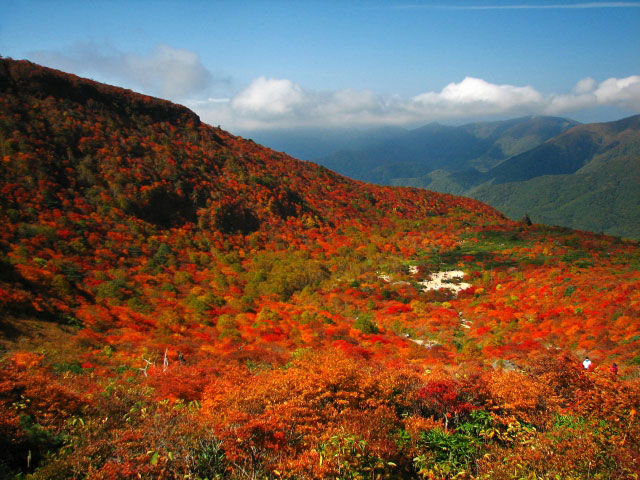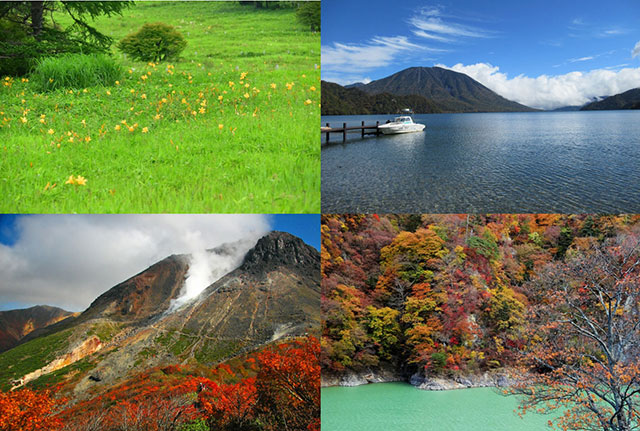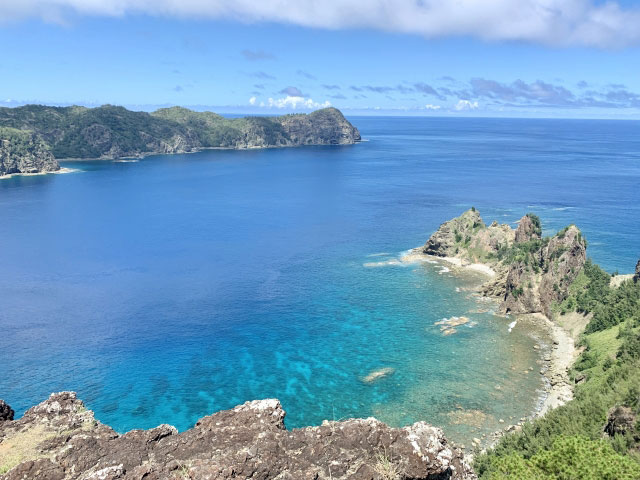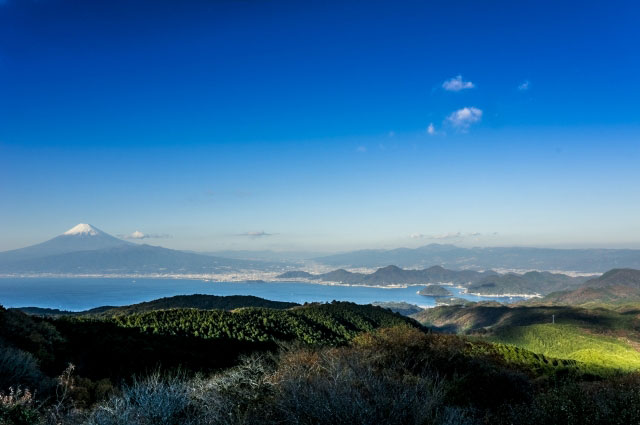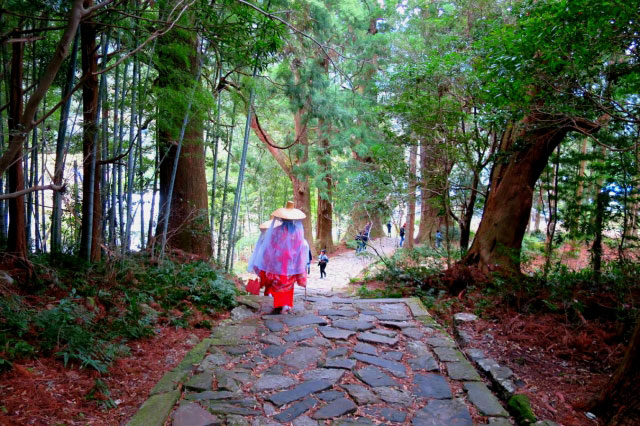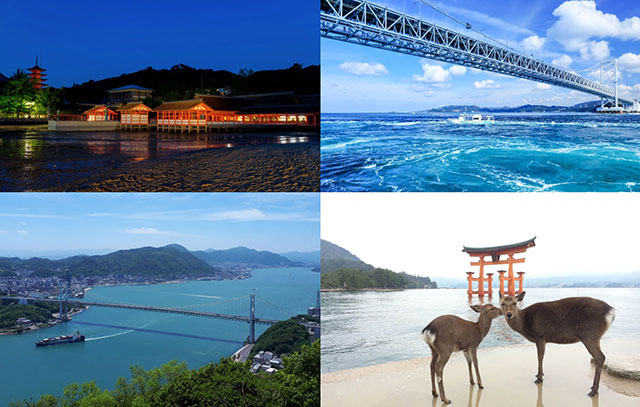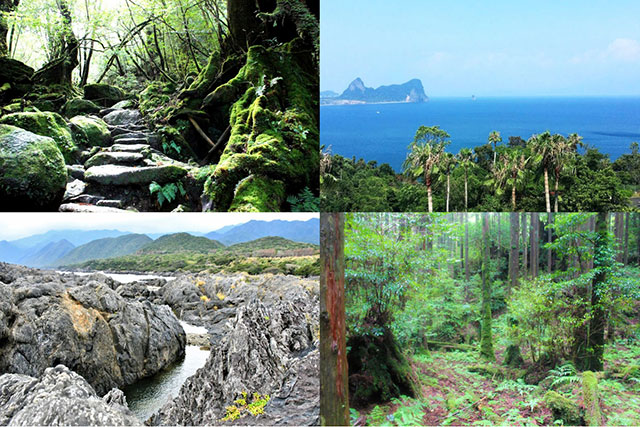
In total, Japan is home to 34 national parks, which can be found across the archipelago from Hokkaido to Okinawa. But only a handful have been designated by UNESCO as World Heritage Sites for their natural beauty and biodiversity. In this article, we’ll introduce you to seven of them, including what you can expect to see, how to get there and where to base yourself while visiting the national park.
-
01
Shiretoko National Park
![Shiretoko National Park]()
Shiretoko National Park
Encompassing most of the Shiretoko Peninsula at the northeastern tip of Hokkaidō, Shiretoko National Park is one of the most remote regions of Japan. It features unspoiled landscapes, a variety of wildlife (including a large population of brown bears) and is one of the southernmost places in the Northern Hemisphere to see drift ice. Hiking trails wind through its temperate and subalpine forests, which are dominated by Erman’s birch, Sakhalin fir, and Mongolian oak, as well as to the Kamuiwakka Hot Falls from which warm spring water cascades.
Due to its remote location, Shiretoko National Park is difficult to access independently, so it’s recommended that you visit with a tour or hire a rental car. The closest railway stations are JR Shari Station and JR Shiretoko Shari Station, with buses connecting from both stations to the national park.![Shiretoko National Park]()
Shiretoko National Park
[Access] From Memanbetsu Airport in Hokkaido, take the Shiretoko Airport Liner bus for 2 hours and 15 minutes. Alternatively, you can take a bus from Hokkaido Kushiro Airport to JR Kushiro Station, then change to JR Kushiro Main Line to JR Shiretoko Shari Station (about two hours), followed by the Shiretoko Line bus (one hour).
- Shiretoko National Park
-
-
- Shari-cho, Shari-gun, Hokkaido, Rausu-cho, Megashi-gun
-
View All -
02
Nikko National Park
![Nikko National Park]()
Nikko National Park
Much easier to access is Nikko National Park, which encompasses mountains, lakes, waterfalls, wetlands, and marshes in the Kantō region. It sprawls across four prefectures - Tochigi, Gunma, Fukushima, and Niigata - and was designated as an imperial park in 1911. Aside from its spectacular scenery which can be explored on a network of hiking trails, Nikko is also famed for its historic Buddhist temples and Shinto shrines designated as UNESCO World Heritage Site. That include the Nikkō Tōshō-gū which most of the shrine complex seen today was renewed in the 17th century and Rinnō-ji that was said to be built in the 8th century.
Autumn foliage in Nikko National Park are particularly impressive, so does the 97-meter-high Kegon Falls and the twin cascades of Ryuzu Falls. Also, not to miss in Nikko are the sparkling waters of Lake Chūzenji, which is backed by the 2,486-meter peak of Mount Nantai.![Nikko National Park]()
Nikko National Park
[Access] If you have a JR pass, take the Shinkansen(bullet train) from Tokyo Station to Utsunomiya Station, then change to JR Nikko Line which takes about 2 hours in total. Alternatively, you can ride the Tobu Railway's Limited Express from Asakusa Station and change at Shimo-Imaichi Station before continuing on the journey to Nikko Station (total ride is about two hours).
- Nikko National Park
-
-
- Tochigi prefecture, Fukushima prefecture, Gunma prefecture
-
View All -
03
Ogasawara National Park
![Ogasawara National Park]()
Ogasawara National Park
While the Ogasawara Islands, a chain of volcanic islands are technically part of Tokyo, they lie around 1,000 kilometers south of the city in the Pacific Ocean. Only the two largest islands, Chichijima (Father island) and Hahajima (Mother Island) are inhabited. Following U.S. occupation during World War II, the archipelago was returned to Japan in 1968 and was inscribed on the UNESCO World Heritage List in 2011.
Ogasawara National Park’s subtropical islands are home to several endemic species, including the critically endangered Bonin flying fox and the Ogasawara snake-eyed skink. The surrounding waters provide habitat for humpback whales and dolphins, as well as green sea turtles and a variety of tropical fishes. Highlights of visiting the islands include snorkeling on the coral reefs, seeing sea turtles laying their eggs on the sandy beaches (during the breeding season only) and soaking up the views of Futami Port from the top of Mount Asahi.![Ogasawara National Park]()
Ogasawara National Park
With no airports on the two largest islands, Chichijima and Hahajima, transportation to the those islands are only possible by ship. About once a week, the Ogasawara Maru ocean liner departs from Tokyo Takeshiba Pier and stays in Chichijima for three nights. It departs from Tokyo Takeshiba Pier at 11am arriving at Chichijima the next day at 11am. And makes the return journey departing the island at 3pm, arriving at Tokyo Takeshiba Pier around 24 hours later. If you’re planning to make the trip, the total journey takes five nights and six days. The timetable may change so its best to check its official webpage from here.
-
04
Fuji-Hakone-Izu National Park
![Fuji-Hakone-Izu National Park]()
Fuji-Hakone-Izu National Park
One of the most popular national parks in Japan for both locals and visiting tourists is undoubtedly Fuji-Hakone-Izu National Park. It centers around the iconic peak of Mount Fuji and Fuji Five Lakes, as well as comprising Hakone, the Izu Peninsula, and the Izu Shichito Islands. Rather than being a single area, the park is a collection of dispersed tourist sites that encompass a variety of natural features - hot springs, coastlines, mountains, lakes, and more than 1,000 volcanic islands.
Highlights of the national park include hiking to the top of Mount Fuji to see the sunrise across Japan and photographing the cherry blossoms along the shores of Lake Kawaguchi. Impressive views of Mount Fuji can be enjoyed from the hiking trails of the Owakudani Valley while there are magnificent panoramas of the Izu Shichito Islands from the rugged Cape Irozaki. Several picturesque waterfalls also dot the national park, including Kawazunanadaru Falls and Shiraito-no-taki Falls.![Fuji-Hakone-Izu National Park]()
Fuji-Hakone-Izu National Park
[Access] About two hours onboard the JR or Fujikyu train from Tokyo to the Mt. Fuji area; about two hours onboard the Odakyu Limited Express train to the Hakone area; about three hours onboard the JR Limited Express "Odoriko" to Shimoda on the Izu Peninsula.
- Fuji-Hakone-Izu National Park
-
-
- Shizuoka prefecture, Yamanashi prefecture, Kanagawa prefecture, Tokyo
-
View All -
05
Yoshino-Kumano National Park
![Yoshino-Kumano National Park]()
Yoshino-Kumano National Park
Stretching from north to south across the Kii Peninsula, Yoshino-Kumano National Park is gradually increasing in popularity with tourists due to its Kumano Kodo pilgrimage route. The park encompasses Nara, Wakayama and Mie prefectures and includes the summit of Mount Yoshino, which is famed for its thousands of sakura trees that ignite in pink and white during the cherry blossom season.
Highlights of Yoshino-Kumano National Park include the UNESCO-listed Kumano Nachi Taisha Shrine, which is one of the three Kumano shrines accessed on the Kumano Kodo. Rather than being a single trail, the Kumano Kodo is a network of pilgrimage trails that have been accessed for more than 1,000 years by devotees as a religious purification rite.
Aside from its picturesque natural landscapes and pilgrimage route, the Kii Peninsula’s surrounding coastline is fast becoming a leading dive destination in Japan, with a rich diversity of corals and tropical fish flourishing under the influence of the Kuroshio Current.![Yoshino-Kumano National Park]()
Yoshino-Kumano National Park
[Access] Take the Kintetsu Limited Express from Kyoto or Osaka for about 90 minutes. There are various ways to reach the trails of the Kumano Kodo, with Kumanoshi Ekimae accessible in around 3 hours 30 minutes by express bus from Nagoya.
- Yoshino-Kumano National Park
-
-
- Mie prefecture, Nara prefecture, Wakayama prefecture
-
View All -
06
Setonaikai National Park
![Setonaikai National Park]()
Setonaikai National Park
Setonaikai National Park is the biggest national park in Japan, encompassing parts of the mainland and the Seto Inland Sea between the Chugoku and Shikoku regions. It’s home to one of the country’s most famous cycling routes - the Shimanami Kaido highway - which connects the park’s various islands across a network of bridges. Beginning in Onomichi City and passing through several charming towns, it extends over 60 kilometers and offers cyclers sweeping views across the Seto Inland Sea.
![Setonaikai National Park]()
Setonaikai National Park
Highlights of the Setonaikai National Park include hiking to the ancient worship center of Mount Misen and taking in the views of the Bisan-Seto Strait from the Goshikidai Plateau. Coincide your visit with low tide to walk between the Karanijima Islands and photograph the famed “floating” torii gate of Itsukushima Shrine, one of Hayashi Gahō's “Three Views of Japan”. You can experience the Naruto Whirlpools (which are Japan’s fastest) by boat or from the Naruto Bridge, with pleasure cruises also exploring the natural scenery of the Kanmon Straits between Kyushu and Honshu.
- Setonaikai National Park
-
-
- Hyogo prefecture, Wakayama prefecture, Okayama prefecture, Hiroshima prefecture, Yamaguchi prefecture, Tokushima prefecture, Kagawa prefecture, Ehime prefecture, Fukuoka prefecture, Oita prefecture
-
View All -
07
Yakushima National Park
![Yakushima National Park]()
Yakushima National Park
Encompassing parts of the Ōsumi Islands, Kuchinoerabu-jima and Tanegashima, Yakushima National Park is a spectacular protected area in Kyushu’s Kagoshima Prefecture. It’s famed for the Yakusugi, a Japanese cedar that’s more than 1,000 years old, as well as the Jomonsugi, the oldest and largest among the old-growth cryptomeria trees in Yakushima. Daiousugi cedar and Mount Miyanoura (1,936m), which is the highest mountain in central Kyushu has been designated as one of the 100 Famous Japanese Mountains, is also something to take a note of.
When it comes to wildlife, Yakushima National Park is home to the endangered Ryukyu flying fox and its own subspecies of Japanese macaque, while loggerhead sea turtles visit seasonally to lay their eggs on the beaches.
The best way to explore Yakushima National Park is by foot with one of the local tour operators. Single-day and multi-day trips are available taking you to the highlights of the national park, without having to worry about public transport logistics.![Yakushima National Park]()
Yakushima National Park
[Access] About 40 minutes by plane from Kagoshima Airport or about two hours by high-speed ship from Kagoshima Honko Port. There are direct flights to Kagoshima Airport from Osaka, Fukuoka, Nagoya and Tokyo.
- Yakushima (Island) National Park
-
-
- Kagoshima prefecture Kumage gun Yakushima cho
-
View All -
Read more: Japan’s Most Beautiful National Parks
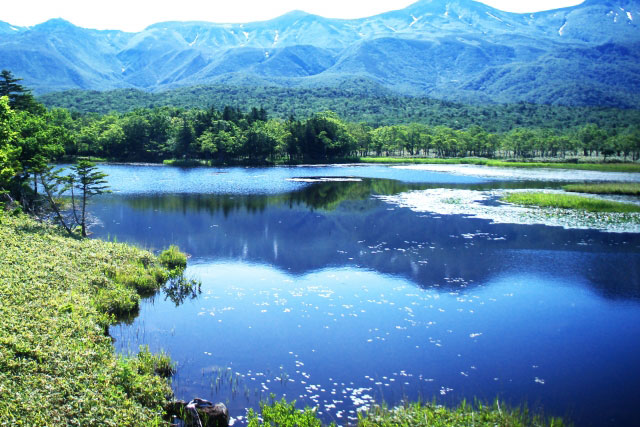
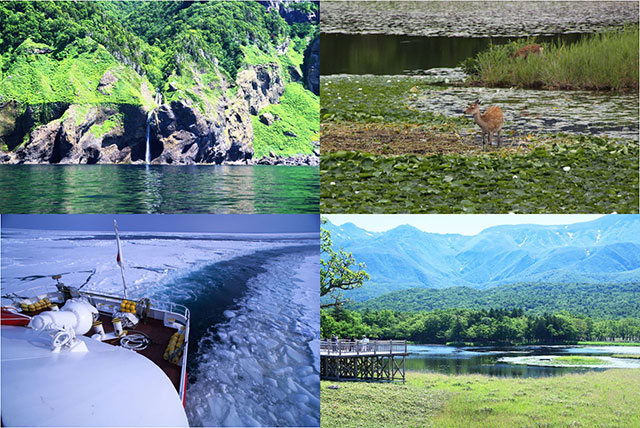

 Go here
Go here